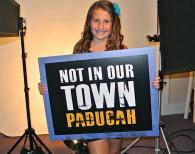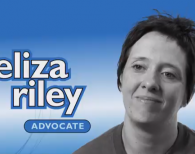If you ever wondered what one person can do, meet Susan Guess. After her 8-year old daughter was bullied two years ago, she moved into action together with her daughter to raise awareness and get her whole community involved in anti-bullying activities.
Bullying
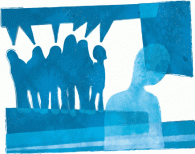
Originally published on Edutopia
By Dr. Becki Cohn-Vargas, Not In Our School Director
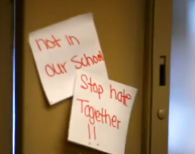
During National Bullying Prevention Month we witnessed countless inspring stories of standing up. Here are two videos that feature the Not In Our School model on the Disney Channel and KPIX in San Francisco.
Disney Channel Showcases Student Upstanders
Now you can tune into the Disney Channel to see an anti-bullying campaign in action!
Students at Sunset Ridge Middle School in Utah covered their campus with Post-it notes that contained messages such as, “Not in our school” and “Stop hate together.” Disney Channel picked up on the activity and is now featuring it as part of their Make Your Mark campaign, reaching nearly 100 million homes in the U.S.
Dealing with bullying is a delicate and complex procedure. The Not In Our School (NIOS) Parent Guide for Preventing and Addressing Bullying and Intolerance highlights what you—as a parent—should do when your child is a victim of bullying. Acting rashly or not acting at all will do nothing to help your child, and this guide gives concrete and specific ideas on the best way to approach a very sensitive situation.

This week, Not In Our School featured a video of DeMonte, an upstander at his middle school as a Safe School Ambassador. The Ambassadors program is part of Community Matters, which encourages students to act as role models against bullying. Community Matters founder Rick Phillips works to equip students with the tools to keep their own schools safe.
By Rick Phillips, Founder of Community Matters
As educators, parents, and the community at large, we have addressed the growing issue of bullying, cyberbullying and harassment by implementing tools, policies and procedures that focus primarily on security. All too often these decisions have been made in the absence of a powerful stakeholder group, a voice that is critical in making systemic change to prevent, de-escalate and stop mistreatment on school campuses, the student voice.
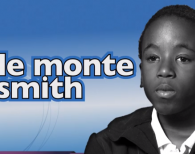
In the latest video for National Bullying Prevention month, we showcase a truly extraordinary upstander, DeMonte.
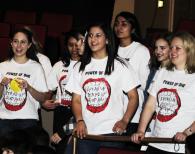
Students from Watchung Hills Regional High School in New Jersey hosted a citywide event called White-Out to Erase Bullying. Students, teachers, residents, and even civic leaders participated by wearing white to make a simple yet powerful message against bullying. Watch the Not In Our School short film about this inspiring activity.
After the White-Out, students reflected on the event and its impact. Here are four perspectives from Watchung students.
“We all have a desire to initiate change in our communities, and at Watchung Hills, it is always stressed that we not only be good students, but we push ourselves to be upstanders in our school and our towns. We heard about the White-Out idea from our teachers and we immediately jumped at the opportunity to be a part of something bigger than ourselves.”—Catherine, junior
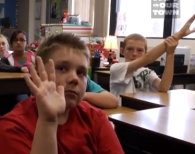
Have you ever been in a situation where you wish you had spoken up to defend yourself? Have you ever stood by when someone else was being teased or bullied and wished you had said something?
It happens to all of us, and though we should not feel bad or guilty about it, we can do things differently if we put our mind to it. The same is true for children. We tell students to speak up for themselves and to stop being bystanders when it comes to bullying, but we need to show them how and let them try it out.
Try It Out is the new Not In Our School film for elementary students. In this film, middle school students help their elementary peers learn three ways to be an upstander. While being an upstander is never easy, roleplaying gives children a chance to practice and explore how it is done.
1. Intervene. We always tell children to intervene safely, meaning not to be aggressive, just firm when intervening and not to take unnecessary risks.
